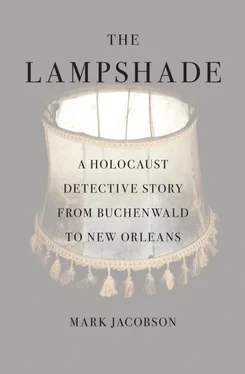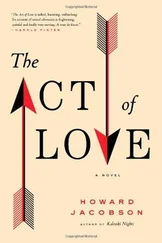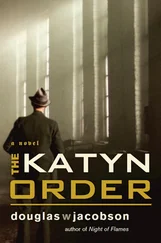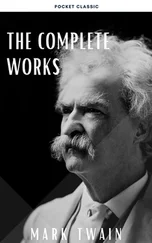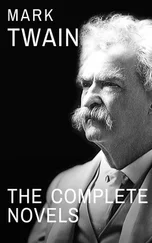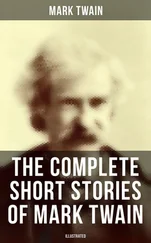He was enjoying himself so much that he refused to return to the space capsule. When fellow astronaut James McDivitt signaled that the walk should conclude, White replied, “No way.” “McDivitt had to drag White back in,” Skip recounted. When White was finally pulled back into the ship, he said, “This is the saddest moment of my life, coming back in here.”
“You think you’re sad now, wait until we get down to earth,” McDivitt supposedly replied. [5] NASA’s version of the Ed White spacewalk incident includes no mention of any feelings of intoxication on the astronaut’s part. It does, however, quote the astronaut as saying his extravehicular activity (EVA), which lasted twenty-three minutes, was “the most comfortable part of the mission,” and that having it end was the “saddest moment of my life.”
After White was killed in a training accident, Skip memorialized him on his arm. It was a tribute, Skip said, “to the man who would not come back in.” Who cared what sort of ass-covering story NASA put out about the incident. When it came to tattoos, it was the metaphor that mattered. Times had moved from when all you saw were Popeye’s anchors and a sallow “Mom” on the saggy arms of afternoon drinkers. All over, nineteen-year-old suburbanites were walking around looking like yakuza who had fallen asleep in the inkman’s chair. Everyone had a tattoo now, some of them really stupid, picked out of a catalog like a paint chip. This was wrong, Skip thought. A true tattoo was a statement of faith. If you were going to mark yourself, commit it to your permanent record, you had to make it count.
Over the following decade, I saw Skip on and off. He remarried, had three more children to go with his four grown boys—the grandiloquently monikered Michelangelo, Dominic, Alessandro, and Antonio—left Clarksdale, and moved four hundred miles down Highway 61, to New Orleans.
It seemed a crackpot notion to put down roots in a place where the water table makes it impossible to bury a body below the ground, but to Skip it made sense. For a former altar boy equally lapsed and devout, New Orleans was much like the Church, or what the brothers of the Sacred Heart taught him was “the one true faith.” Intellectually you knew it was all lies—the Anne Rice bedsheet-waving crapola and the storied decay—but once you walked into St. Louis Cathedral in the Quarter and smelled the incense, or heard the second-line band going down Rampart Street, Lord have mercy! The place wasn’t what it once had been—even Fats Domino, who preferred sitting on the porch of his Ninth Ward yellow and brown house with the letters FD embossed on the front, had to play the Vegas lounges to make a living—but still the city offered shabby, irresistibly noncorporate redemption, a chance to be part of something, however hokey, bigger than yourself.
Morons call New Orleans the Big Easy, but this is one more carny ruse to keep those out-of-town suckers drinking. The Big Anxiety is more like it. Once the second-largest city in the United States, for years the biggest in the South, the place has always been hanging by a thread. Founded in 1718, the fledgling settlement was completely wiped out by a storm in 1722. In 1788, 856 of the town’s 1,100 structures were destroyed by fire. Yellow fever epidemics were rife throughout the nineteenth century. In 1853, more than 12,000 people succumbed in a matter of months. The only noteworthy outbreak of bubonic plague, the apocalyptic medieval “black death,” in the United States, hit the city in 1914, causing widespread terror. [6] The most interesting work on New Orleans’s ever-changing geography has been done by Richard Campanella. A New Orleans resident, his books include Bienville’s Dilemma , Time and Place in New Orleans, and Geographies of New Orleans: Urban Fabrics Before the Storm .
The willful illogic of building a city largely below sea level, on swamplands sandwiched between the Mississippi River and Lake Pontchartrain, the second-largest saltwater lake in North America, has long flummoxed sober-minded urban planners. According to National Geographic, the city has been subject to major floods twenty-seven times since its founding, which breaks down to nearly once every ten years. The Great Flood of 1927 displaced 700,000 people along the Mississippi, including more than 300,000 African Americans, who were duly rounded up and herded into refugee camps. In response to the deluge, the City of New Orleans, employing a time-honored race/class-based theory of emergency management, notoriously dynamited its overburdened levee system, diverting the high waters from the rich, “uptown” areas to the poorer downriver precincts.
In his resonant tune “Louisiana 1927,” Randy Newman sings, “President Coolidge come down in a railroad train,” but that never happened. In a precursor of more recent history, Coolidge, who refused to extend federal funds to deal with the calamity, remained in Washington. In his stead, he sent Commerce Secretary Herbert Hoover (whom Newman refers to as “a little fat man with a notepad in his hand”), who vowed to resettle the refugees. Later, as president, Hoover reneged on this promise. In a move that would become the template for such disasters, authorities spent federal money to increase the size of the levees, a hit-and-miss approach that failed most notably in September 1965, when the storm surge from Hurricane Betsy breeched the walls, inundating the town for two weeks.
This was what you bought into by moving to the Crescent City, Skip Henderson knew well, the deal you made for getting to eat real good oyster po’ boys and smell the night-blooming jasmine in your backyard. There was a point where simple tolerance for impermanence crossed over into fetishization, but that’s what attracted people like Skip Henderson to New Orleans. They hazarded a glance at the sky, waiting for the other shoe to drop yet again. Between 1999 and 2004, with globally warmed Gulf waters churning at an unprecedented rate, Skip and his family evacuated their home four times.
New Orleans evacuations have a rhythm, a routine. A hurricane is not like an earthquake, a sudden heart attack from out of nowhere and then you’re dead. Tracked by long-range meteorological projection, the hurricane approaches as a dread-drenched creep. From the moment the storm is identified, usually as an anonymous “tropical depression” somewhere off West Africa, and begins moving west, through the Sargasso Sea, onward toward the de rigueur destruction of Haitian shantytowns, now with a name just to make it personal, the tension builds. When it gets into the Gulf, that’s showtime. The doomsday weathermen are waving their laser pointers and here it comes, that buzzsaw Rorschach blot, like a teratoma blanched blue and green by the radar scans, a telegraphed haymaker you can’t quite duck. And there, in the middle, at the center of the swirl, is the eye. The unblinking, Old Testament eye in the sky, malocchio in the Italian, kin-a-hora, as my Yiddish mother used to say: the evil, evil eye.
Of course, this being New Orleans, there are always those who simply will not go. The phlegm coughers, the black tooth types, blustering how they rode it out then and they were going to ride it out now, and the only way they are leaving is when some cop pries their stonecold ass cheeks from the bar stool. It is a rap so stupid, so indolently hell-bent, you could almost envy it, Skip Henderson often thought. But what was a family man to do? Three little kids and a wife. Who wanted to be that one last fool who, upon seeing the birds flying inland, or hearing the crash of a brownshirt’s brick through the shopkeeper’s window, didn’t get while the getting was good?
For Skip, the last few moments before the evacuation, with the boxes packed and kids safe in their car seats, were painful triage. In the collector’s life, what could be left behind? Which Fender? How many of the wristwatches bought from unaware or desperate secondhand dealers? A framed ticket stub from the sixth game of the 1986 World Series? Collecting was a life-defining joy, but hoarding was a sin. It was against what Luke said in his Gospel, 12:15, an admonishment about “covetousness.” There was virtue in traveling light, but it didn’t take away the heartbreak of leaving things behind.
Читать дальше
